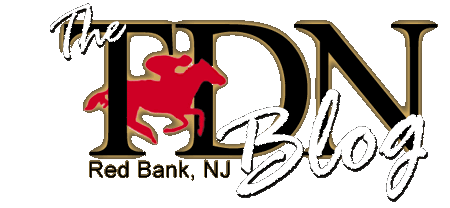The comeback of Gary Stevens, who is nearing the age of 50, should be no surprise. When Stevens accepted the adventure of riding in France in 2004, I had a chance to interview him and I came away with the impression that the meaning of Mr. Stevens’s life has a lot to do with the need for greater challenges along the way. (He finished third in his comeback race this past Sunday.)
In boxing, George Foreman could be considered a statistical anomaly in returning to the ring at the age of 45. In boxing and so many other sports, youth has the great edge over maturity. But of all sports, racing is the least likely to practice age favoritism. Pincay, Shoemaker and Russell Baze are just a few of the riders who continued to win big races after the age of 50.
The age factor
 |
| Gary Stevens |
The gender factor
Second, only in racing (and other equestrian events) do men and women compete in the same arena. Most of us know about Julie Krone’s brilliant career but she’s not alone. Around the racing world we find more than a few women who compete rather successfully with the men. Years ago in Southern California, I had a chance to interview Joy Scott at Clockers’ Corner. I suggested that she could be a leading rider at a smaller racing circuit. At that time, I argued, Lillian Kuykendall was the leading rider at Charles Town. Joy Scott responded that she loved life in Southern California even if her win percentage seriously suffered when having to compete against the McCarrons and Pincays. Considering the fact that the average odds of her mounts was well over 20-1, she was holding her own.
The team factor
Third, racing is a team sport like no other. In tennis or basketball, teammates get to understand each other at the same intellectual level. But in racing, the jockey and horse have rather different thought processes. Therefore, communication needs to be much more nuanced, and when this happens at 40 miles per hour, it can get truly exciting.
So we have a sport in which young men and women compete against people who are old enough to be their fathers or mothers. We have Mike Smith and Chantal Sutherland, formerly engaged to be married, meeting up at the finish line of the Breeders’ Cup Classic in 2011, with Smith’s Drosselmeyer catching Sutherland’s Game On Dude at the wire. We have an artistic form of non-verbal communication going on between jockey and horse.
The participatory factor
And finally, thanks to handicapping and betting, racing becomes an intensely participatory experience for the spectators. Sure, you can bet on football, basketball, golf and who knows what other sports. But such sports remain primarily a vicarious pleasure for the majority of spectators. In racing, on the other hand, the usual spectator has an intensely intellectual stake in the outcome.
If the industry focused on these four factors, racing could break through the subculture barrier and make inroads in the mainstream. Gary Stevens proves this point. The non-racing media has covered his comeback in a way that folks who have never (yet) made a two-dollar bet can catch a glimpse of the wonders of horse racing.


No comments:
Post a Comment